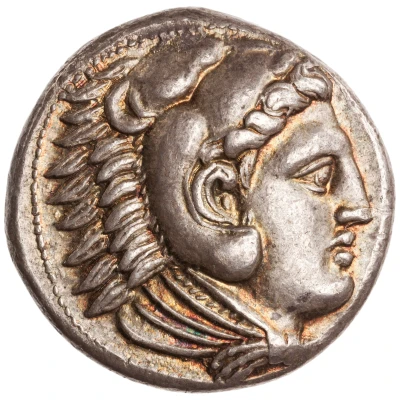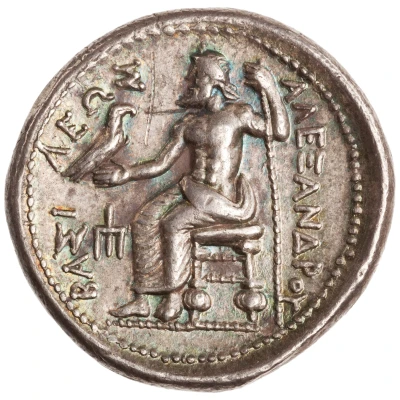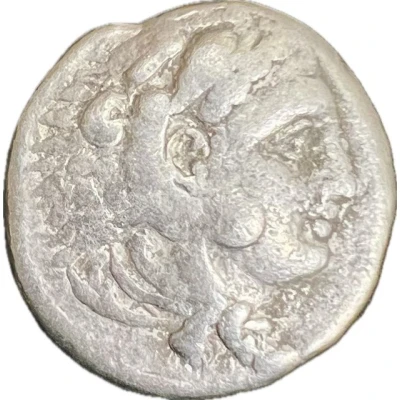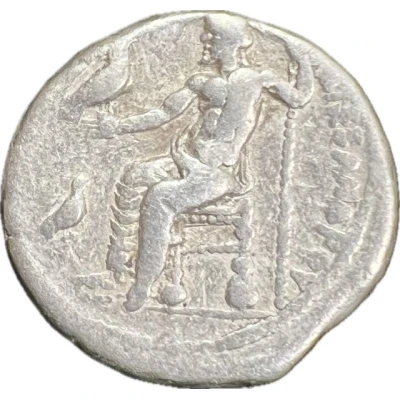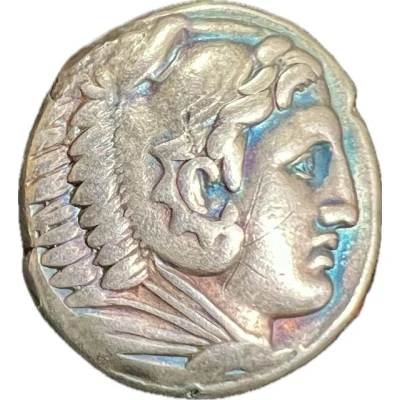
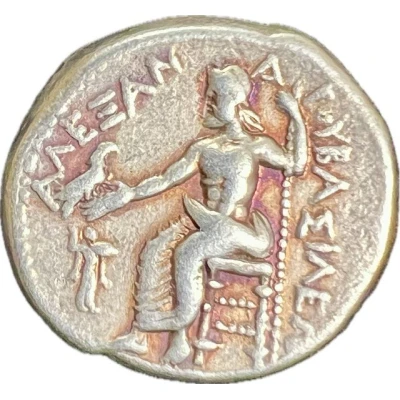

© J.C. Scherff (CC BY-SA)
Tetradrachm In the name of Alexander III; Amphipolis 322 BC - 320 BC
| Silver | 16.9 g | 26 mm |
| Issuer | Kingdom of Macedonia |
|---|---|
| Regent | Antipater (321 BC - 319 BC) |
| Type | Standard circulation coin |
| Years | 322 BC - 320 BC |
| Value | Tetradrachm (4) |
| Currency | Drachm |
| Composition | Silver |
| Weight | 16.9 g |
| Diameter | 26 mm |
| Shape | Round (irregular) |
| Technique | Hammered |
| Orientation | Variable alignment ↺ |
| Demonetized | Yes |
| Updated | 2024-10-10 |
| Numista | N#422048 |
|---|---|
| Rarity index | 97% |
Reverse
Zeus seated to left on backless throne, holding eagle in his right hand and long scepter in his left. Left field Athena Promachos standing right.
Script: Greek
Lettering: ΒΑΣΙΛΕΩΣ ΑΛΕΞΑΝΔΡΟΥ
Translation: King Alexander (III, the Great)
Interesting fact
The Tetradrachm coin was issued during the reign of Alexander the Great's father, King Philip II of Macedon. It features an image of Alexander III (also known as Alexander the Great) on one side and an image of the goddess Athena on the other. This coin was used as a standard circulation coin in the Kingdom of Macedonia during the 4th century BC and was made of silver, weighing 16.9 grams. It's interesting to note that the Tetradrachm coin was widely used throughout the ancient Greek world and was considered a symbol of the power and influence of the Macedonian Empire. The coin's design and weight were standardized across the empire, making it a widely recognized and trusted form of currency.
